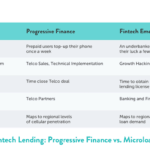Improving the Outcomes-Readiness of Implementors – A Key Step Towards Scaling Results-Based Financing
Results-based financing (RBF) includes a range of mechanisms through which development funding is tied to the delivery of measurable results, previously agreed-upon between the funder and implementing organization. There is a broad range of RBF instruments, including some that tie payment to outcomes (i.e., the benefits a program or organization delivers) and others that tie it to outputs (i.e., the specific products or services that contribute to achieving those outcomes). Our recommendations below focus on RBF mechanisms that are tied to outcomes, such as Impact Bonds, Social Success Notes, etc.
The advantages of these instruments are well-known: They offer more accountability and greater flexibility in how capital is deployed, which can increase the efficiency, effectiveness and timeliness of spending. At the same time, they can also strengthen cooperation and forge new partnerships that would otherwise not have happened – for instance, impact bonds can do so by shifting the risk of not meeting outcomes from funders to investors. In certain cases, RBF instruments have been shown to deliver as much as ~50% higher outcomes than non-RBF approaches, based on a comparison of outcomes delivered by programs run by implementing organizations under the Quality Education India Development Impact Bond (QEI DIB), and programs run by them outside of that bond. (The QEI DIB is one of the world’s largest education-focused DIBs, for which UBS Optimus Foundation is the investor and Dalberg is the performance manager.) RBF also becomes particularly relevant in the context of COVID-19, as meeting the pandemic’s challenges will require development initiatives to achieve better results with reduced budgets.
Given these benefits, the RBF space has gained significant traction in recent years. It has seen increasing maturity in instruments and considerable ongoing innovation, such as new RBF instruments like Social Success Notes. RBF now covers a range of sectors like social welfare, employment, health, education, water and sanitation, environment, agriculture, etc. These instruments have also progressed from relatively innovative but small-scale pilots, to large programs, to pooled outcomes funds that fund a portfolio of programs.
The Importance of Implementing Organizations In Establishing A Marketplace For Outcomes
With the emergence of RBF, a key area to understand is how implementing organizations can become more “outcomes-ready,” so that a healthy marketplace between funders and implementing organizations can be established. When our teams at Dalberg and UBS Optimus Foundation set out to identify implementing partners for the QEI DIB, we learned that while there is high interest among implementing organizations in participating in RBF, many organizations are not quite ready to take on funding that is tied to outcomes instead of inputs and activities.
First, these organizations may not have full awareness of the implications of receiving results-based funding — or they may simply lack certain required capacities. For example, they may not have robust Monitoring, Evaluation and Learning (MEL) systems, or they may lack the ability to analyze data and refine the program based on it.
Second, implementing organizations may not be able to take on the greater risks of failure associated with RBF instruments. While there are often incentives for outperformance in RBF mechanisms, there are also increased risks of non-performance — such as losing out on subsequent funding opportunities or incurring reputational damage — that smaller organizations may not be able to absorb.
Third, implementors may find it difficult to replicate their impact when they scale their interventions — an important factor as RBF instruments mature and shift from funding small-scale pilots to supporting interventions, and demonstrating impact, at greater scale.
Five Characteristics of Outcomes-Ready Implementing Organizations
What does an ideal outcomes-ready implementing organization look like? For starters, a proven track record and an inherently strong delivery model are basic building blocks for success in results-based financing. Apart from this, we have identified five additional characteristics that make an excellent outcomes-ready organization.
MEL capabilities and data-driven culture: RBF instruments require robust interim data to understand if an organization is on track to achieve the final outcomes to which payments are ultimately tied. This interim information is critical for diagnosing the risks of a program that may not be on track to achieve its committed impact, and making adaptations early enough for final outcomes to be met. Our experience shows that organizations with well-developed MEL systems are able to tap into data so that they can adapt more quickly. For example, in the QEI DIB, one of the implementing organizations was able to track real-time data about its adaptive ed-tech software usage. This enabled the organization to quickly take corrective action in schools that were showing low usage — e.g., by providing them with more experienced field staff. Strong MEL, among other factors, led this organization to ensure strong final outcomes.
A flexible approach: As an RBF instrument ties payments to the achievement of final outcomes, organizations must remain open to different methods of improving their approach or adapting it to changing environments. To that end, it is critical for the organization to have a flexible approach. For instance, under the QEI DIB, the implementing NGOs had to ensure continued learning for students even when schools were closed due to COVID-19. Since this was an RBF instrument, they had to demonstrate learning gains for students in the remote schooling year in order to continue receiving the funding under the DIB. The situation demanded a significant shift to remote schooling from previous in-school approaches, but the organizations were able to adapt due to their nimbleness and flexible approaches. They pivoted quickly to delivering remote education using a combination of techniques — for example, developing content that could be used digitally, and conducting in-person learning sessions for students in communities where strict lockdowns were lifted but schools still remained closed.
Strong organizational capacity and motivated staff, across levels: The high-stakes environment of RBF demands a high level of commitment and dedication. Organizations that do well generally have an involved leadership team that is able to chart out a strategic pathway and motivate the organization as a whole. At the same time, they also have a nimble field staff that enables them to make a quick and independent response to challenges faced in the field. For instance, in the Educate Girls DIB, the core leadership team created a capable implementation team that was empowered to make on-the-ground decisions and course corrections to ensure targeted delivery of the program. Beneficiaries of the program ultimately met 160% of the learning outcome targets.
A focus on precise execution and program planning: RBF requires organizations to hit the ground running, in order to demonstrate results in a specific time frame (often annually). As a result, implementors need to maintain a razor-sharp focus on the delivery of the intervention, while ensuring timely course corrections in case of delays.
Ability to manage external relationships: Outcome achievement can often be impacted by various external risks that may not be under the direct control of an organization. For instance, demands from a teachers’ union for training teachers in new skills may affect how that program is managed. Therefore, ensuring that outcomes are met under RBF instruments requires implementors to navigate successfully across a myriad of stakeholders that may affect the program, beyond just direct beneficiaries like governments, communities, etc.
Supporting the Outcomes-Readiness of Implementing Organizations
How can implementing organizations be made more outcomes-ready? We have identified five ways of doing this, focusing on avenues that can be created both within individual RBF instruments and for the ecosystem as a whole.
- Consider preparatory phases before commencement: This can help the implementing organizations gear up for RBF requirements and make any necessary adaptations (e.g., improving MEL systems).
- Budget for capacity-building costs in individual RBF contracts: Individual RBF contracts can set aside a dedicated pool of money to cover capacity-building measures that can make implementing organizations more outcomes-ready along the way.
- Launch accelerators focused on capacity building for outcomes-readiness: Accelerators can be launched to identify promising and interested implementing organizations in different sectors, then build their capacity to become outcomes-ready over time. This will help maintain a ready pipeline of implementing organizations that can absorb outcome funds.
- Consider for-profit inclusive businesses, in addition to non-profits for funding: Beyond NGOs, for-profit businesses that have inclusive business models can also be considered for RBF contracts. While there are certain RBF approaches that focus explicitly on for-profit businesses (e.g., Social Success Notes), these enterprises are under-represented in other RBF instruments (e.g., Impact Bonds). For-profit businesses bring private sector rigor to their ways of working, along with robust MEL systems which could be advantageous in RBF settings. In RBF instruments that fund more than one organization, for-profits can also share their expertise in these areas with non-profits, to ultimately support them in becoming more outcomes-ready.
- Follow a portfolio approach for funding and have diversity in implementors: Rather than funding only one implementor under each RBF instrument, funders could follow a portfolio approach in which a range of implementors are funded. This not only helps mitigate risk but also allows implementing organizations to learn from each other’s strengths, thus helping in capacity building. For example, there are early indications from RBF programs that organizations with relatively flatter organizational structures can be more effective, as there is more ownership and faster decision making.
The world has less than a decade left to achieve the ambitious targets set in the Sustainable Development Goals, and there is a large gap in development financing aimed at meeting these targets. RBF approaches provide a greater bang for the buck, and their efficiency has become even more important as this funding gap widens in response to the COVID-19 crisis. Exploring solutions like those discussed above could help establish a healthy marketplace for results-based financing, propelling growth in the sector and benefiting not only funders and implementing organizations, but also the communities they serve.
Gagandeep Nanda is a Senior Project Manager at Dalberg; Dhun Davar is Global Head of Social Finance at UBS Optimus Foundation and India Head for UBS Optimus Foundation and Philanthropy Services; Sietse Wouters is program director for Social Finance at the UBS Optimus Foundation.
Photo courtesy of DFID – UK Department for International Development.
- Categories
- Impact Assessment, Investing



